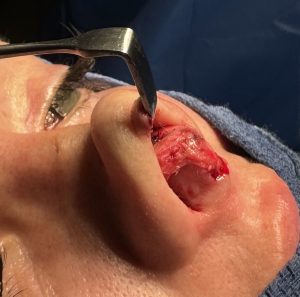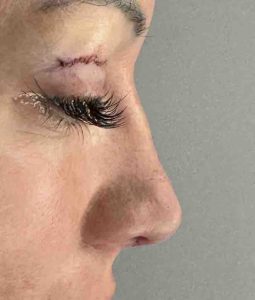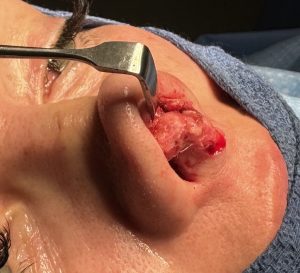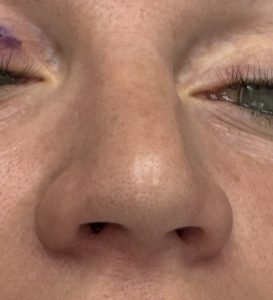Background: The tip of the nose is the most common area that is changed in many rhinoplasty surgeries. It is the most anatomically complex part of the nose due to the confluence of the lower alar cartilages, septum and the nostril openings. As a result there are a large number of technical maneuvers to change the size and shape of these tip cartilages to improve its shape. But these cartilage tip changes are not always completely predictable and there is also the influence of how well the overlying skin allows the tip reshaping to be seen.
As a result it is not rare for the nasal tip to not create the desired changes that the patient desires. This may require secondary nasal tip surgery at some point whose timing can be debated. But it is generally agreed amongst most plastic surgeons that a minimum of six months to a one year after the primary procedure should be allowed for the nasal tip skin to shrink and adapt down to see the true final tip shape.
While some patients may be anxious for secondary tip surgery others may wait for years before considering another procedure. This may be due to economics but is more often due to indecision as to whether it is worth it. They have come to accept the result as it is better than what it was, maybe not ideal, but have learned to live with it.
But at some point they may decide to have further surgery even if it is many years later. That motivation can come from various reasons and often it is not from the original treating surgeon. They may seek out either surgeon who they feel may create a different aesthetic outcome.
Case Study: This female had a rhinoplasty 14 years previously which provided some good improvement but she always wished the tip was more upturned and narrow. She felt her original surgeon was more conservative than she would have liked.



Key Points:
1) Improvement in nasal tip shape from a primary rhinoplasty can be obtained many years later.
2) Most secondary nasal tip desired changes are reductive in nature whose ultimate effects depends on skin adaptation.
3) Expect considerable tip cartilages scarring in secondary tip surgery which usually requires a complete dismantling for optimal cartilage changes.
Dr. Barry Eppley
World-Renowned Plastic Surgeon





